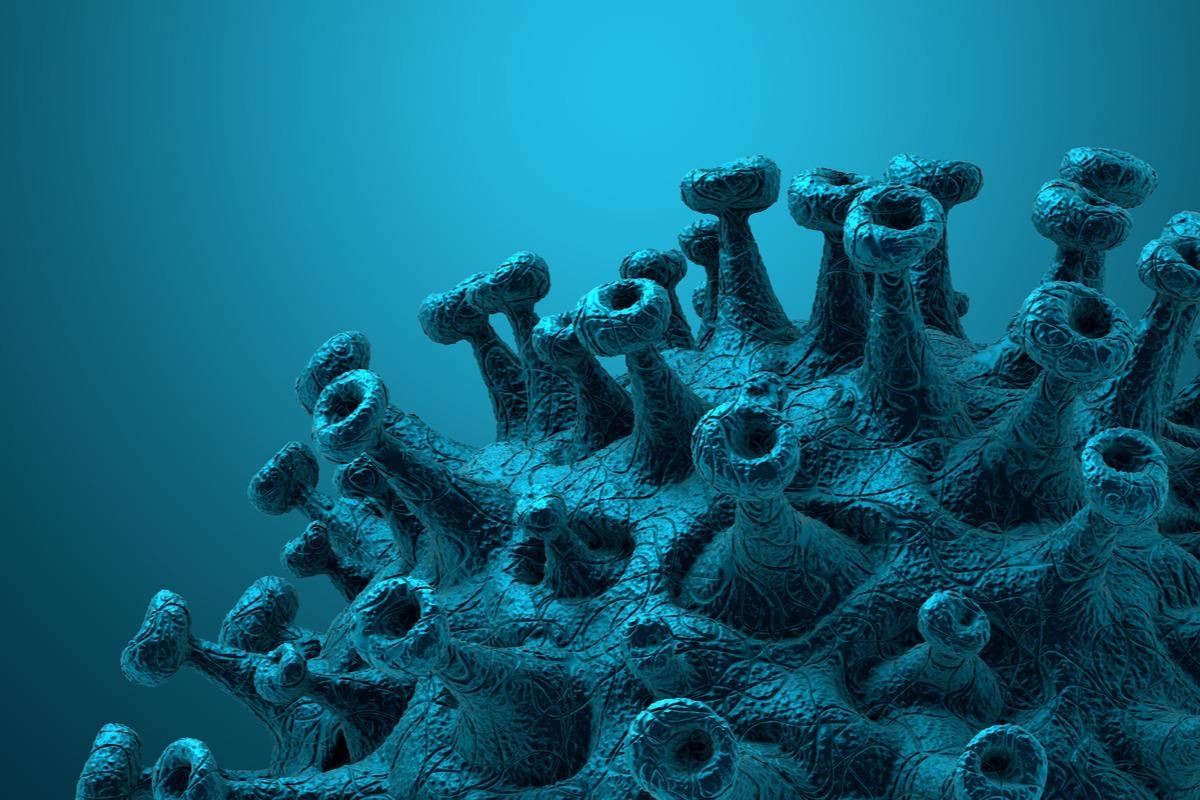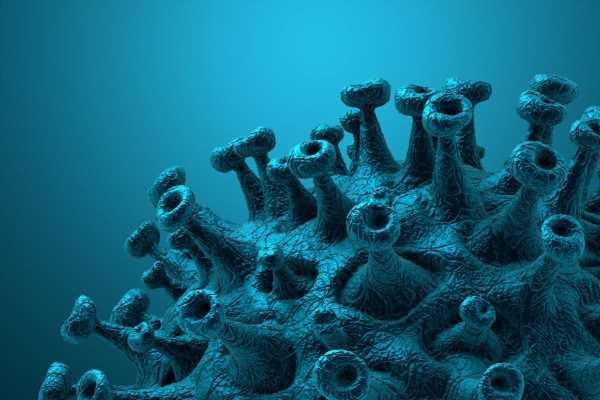In a study posted recently to the bioRxiv* preprint server, researchers determined the early immune response to severe acute respiratory syndrome coronavirus-2 (SARS-CoV-2) during mild coronavirus disease 2019 (COVID-19) in rhesus macaques.
 Study: Mild SARS-CoV-2 infection in rhesus macaques is associated with viral control prior to antigen-specific T cell responses in tissues. Image Credit: CROCOTHERY/Shutterstock
Study: Mild SARS-CoV-2 infection in rhesus macaques is associated with viral control prior to antigen-specific T cell responses in tissues. Image Credit: CROCOTHERY/Shutterstock
In humans, COVID-19 manifests with a wide range of symptoms and clinical outcomes such as in asymptomatic cases where the viral infection is effectively controlled and severe cases with fatal infections due to organ failures. More research is required to unravel these differences in the immune response and functions of individual immune cell types between asymptomatic and severe COVID-19 cases.
Several studies have shown that in severe COVID-19, levels of pro-inflammatory cytokines are increased, type I interferon-γ (IFN-γ) response is deficient, and inflammasomes, monocytes/macrophages, and neutrophils are activated. Autopsy reports of COVID-19 patients have shown that extrapulmonary tissues lacked infiltrating immune cells despite the high viral presence. These observations underpin the need to understand the host immune response in the first few days of SARS-CoV-2 infection.
The study
In the present study, a team of researchers used rhesus macaques as models to elucidate 1) lung inflammation kinetics by using 18FDG (fluorodeoxyglucose) positron emission tomography/computed tomography (PET/CT ) imaging, 2) the innate immune response by scRNAseq (single-cell RNA sequencing), and 3) the SARS-CoV-2-specific T cell distribution in tissues by flow cytometry.
Findings
PET/CT imaging revealed heterogeneous inflammatory foci with increased 18FDG uptake and lesion density at 3 days post-infection (dpi) which resolved by 9 dpi. Nasal and throat swab samples showed that total genomic nucleocapsid (gN) and subgenomic nucleocapsid (sgN) RNA levels peaked at 1-2 dpi, and by 7-10 dpi their levels were undetectable. Viral RNA was found in bronchoalveolar lavage (BAL) at 4 dpi which was lost by 7-10 dpi and it was observed that plasma lacked viral RNA at all time points. Necropsy performed at 10 dpi for tissue analysis demonstrated the presence of SARS-CoV-2 gN RNA in all secondary lymphoid organs (SLO) and non-lymphoid tissues (NLT).
scRNAseq analysis was conducted on peripheral blood mononuclear cells (PBMCs) and BAL samples collected before infection and at 4, 7, and 10 dpi. No major changes in T/NK cell composition from PBMCs were detected, and at 4 dpi, naïve CD8 T cell levels dropped while memory CD4 T cells increased. Similarly, at 4 dpi in the myeloid cells, the CD14+ monocytes expressing PGTS2 declined with a corresponding increase in two inflammatory monocyte populations that had IFN responsive gene signatures.
In the BAL samples, distinct T cell and myeloid populations and further clustering of classified myeloid and T cells into 10 and 5 populations, respectively, were seen. At 4 dpi, a mixed population of CD8 and CD4 cells, with IFN responsive gene signatures, was observed which was cleared by 7 dpi. Consistent with the other findings, IFN-activated monocytes and macrophages in the BAL showed changes in population at 4 dpi and their numbers declined by 7 dpi.
The researchers observed a decline in B cells after infection, but a 2-3% increase in activated naïve B cells from PBMCs was noted at 4 and 7 dpi and the humoral responses were detectable by 10 dpi. The authors performed ex vivo restimulation with peptide pools from SARS-CoV-2 spike (S), nucleocapsid (N), and membrane (M) proteins, and multiple SARS-CoV-2 antigens found to be immunogenic in humans. The antigen-specific T cell response was more notable in BAL than in PBMC, and overall, the T cell responses were around 10-20 fold higher in the BAL than in PBMC.
Memory CD4 and CD8 cells were seen in all NLTs while antigen-specific CD4 and CD8 T cells were abundant in pulmonary tissues but were undetectable in many nasal turbinates, salivary glands, and tonsils.
Conclusions
The present study demonstrated that the SARS-CoV-2 replication kinetics and the immune response in rhesus macaques followed a typical pattern of acute viral infection. SARS-CoV-2 viral load peaked at 1-2 dpi and declined subsequently, while IFN-activated monocytes, macrophages, and dendritic cells in PBMC and BAL effectively acted in the early phase of infection in rhesus macaques.
The absence of antigen-specific T cells in the extrapulmonary mucosal tissues (salivary glands, tonsils, and nasal turbinates) during SARS-CoV infection was surprising; nevertheless, the authors proposed that the effector T cells could accumulate after 10 dpi and emphasized that further research into tissue distribution of effector T cells is needed.
Altogether, these findings indicate that SARS-CoV-2 replication is mostly suppressed before the antigen-specific T cell response is elicited and suggest that T cell activity could most likely be pronounced when the infection is not resolved by innate immune factors in moderate or severe COVID-19.
*Important notice
bioRxiv publishes preliminary scientific reports that are not peer-reviewed and, therefore, should not be regarded as conclusive, guide clinical practice/health-related behavior, or treated as established information.
- Nelson, C.E., et al. (2022). Mild SARS-CoV-2 infection in rhesus macaques is associated with viral control prior to antigen-specific T cell responses in tissues. bioRxiv. doi: https://doi.org/10.1101/2022.01.06.475282 https://www.biorxiv.org/content/10.1101/2022.01.06.475282v1
Posted in: Medical Science News | Medical Research News | Disease/Infection News
Tags: Antigen, Blood, CD4, Cell, Computed Tomography, Coronavirus, Coronavirus Disease COVID-19, covid-19, CT, Cytokines, Cytometry, Ex Vivo, Flow Cytometry, Fluorodeoxyglucose, Gene, Genomic, Imaging, Immune Response, Inflammation, Interferon, Membrane, Monocyte, Neutrophils, Positron Emission Tomography, Research, Respiratory, RNA, RNA Sequencing, SARS, SARS-CoV-2, Severe Acute Respiratory, Severe Acute Respiratory Syndrome, Syndrome, Throat, Tomography

Written by
Tarun Sai Lomte
Tarun is a writer based in Hyderabad, India. He has a Master’s degree in Biotechnology from the University of Hyderabad and is enthusiastic about scientific research. He enjoys reading research papers and literature reviews and is passionate about writing.
Source: Read Full Article
